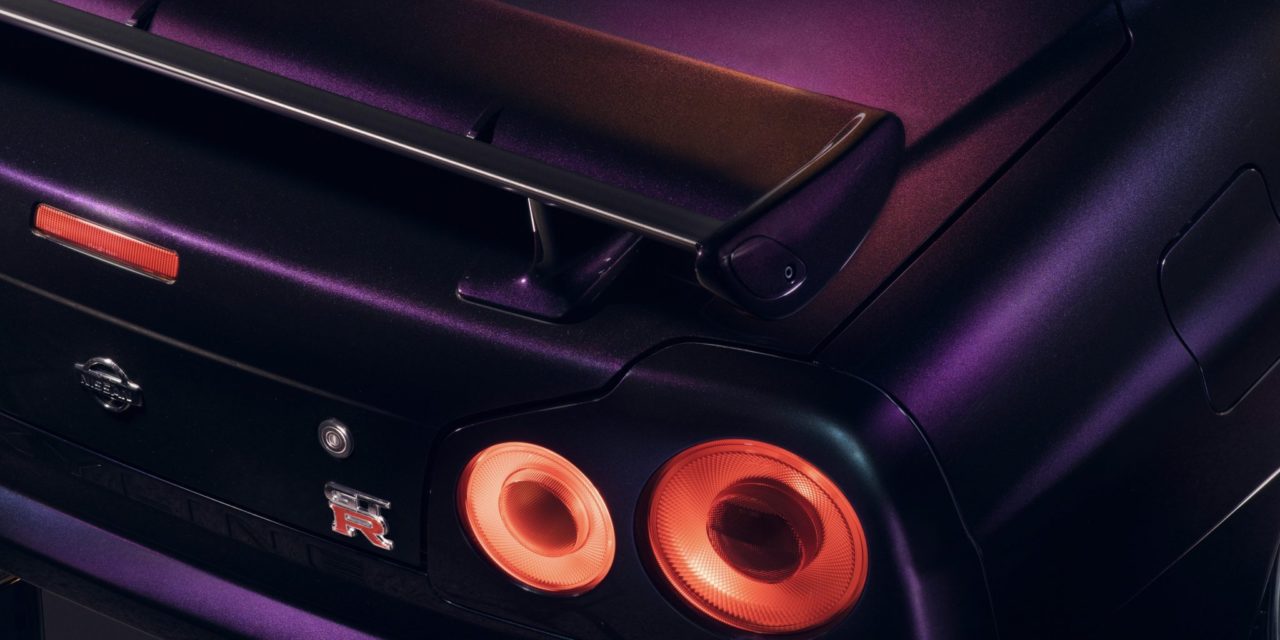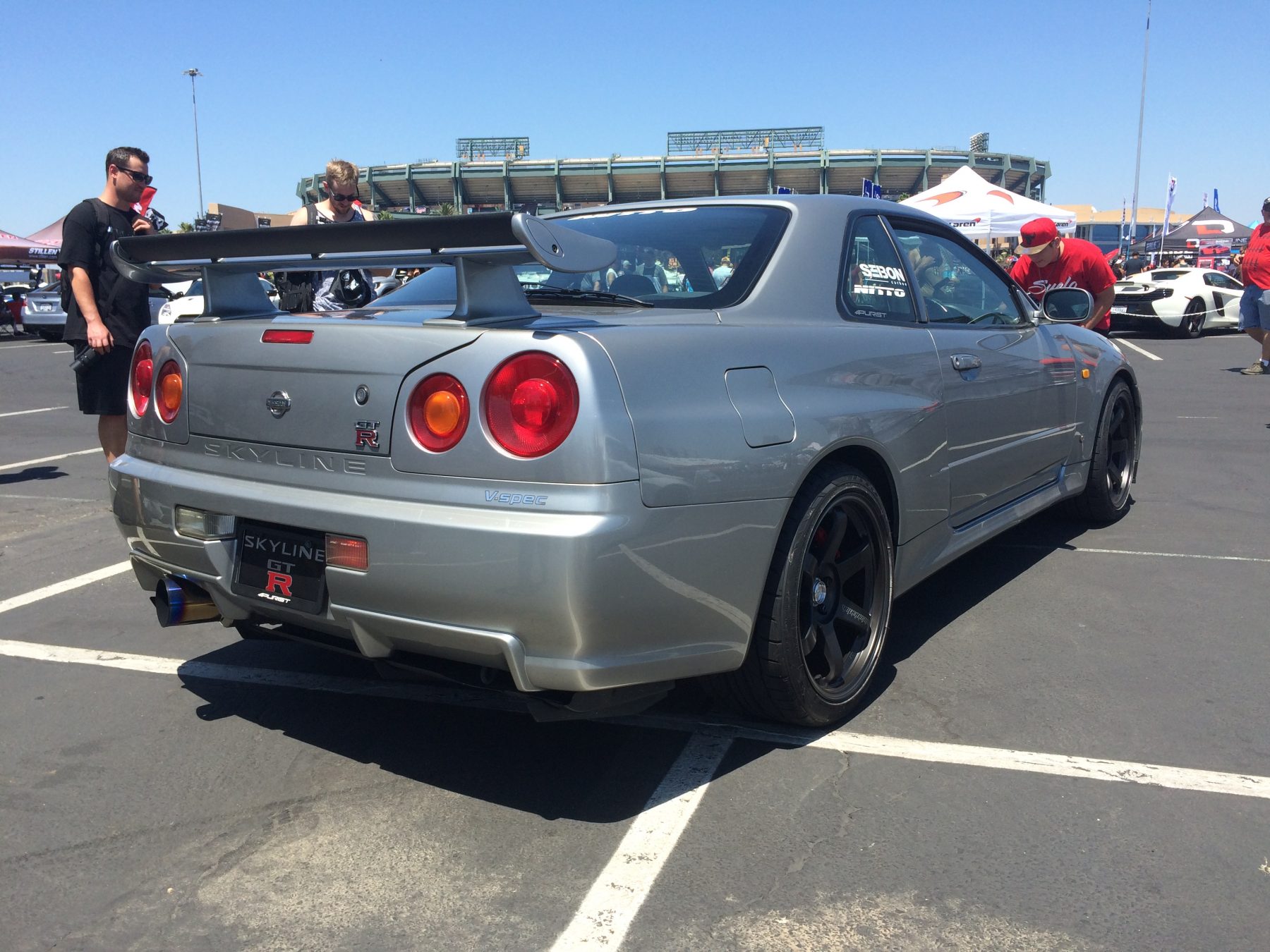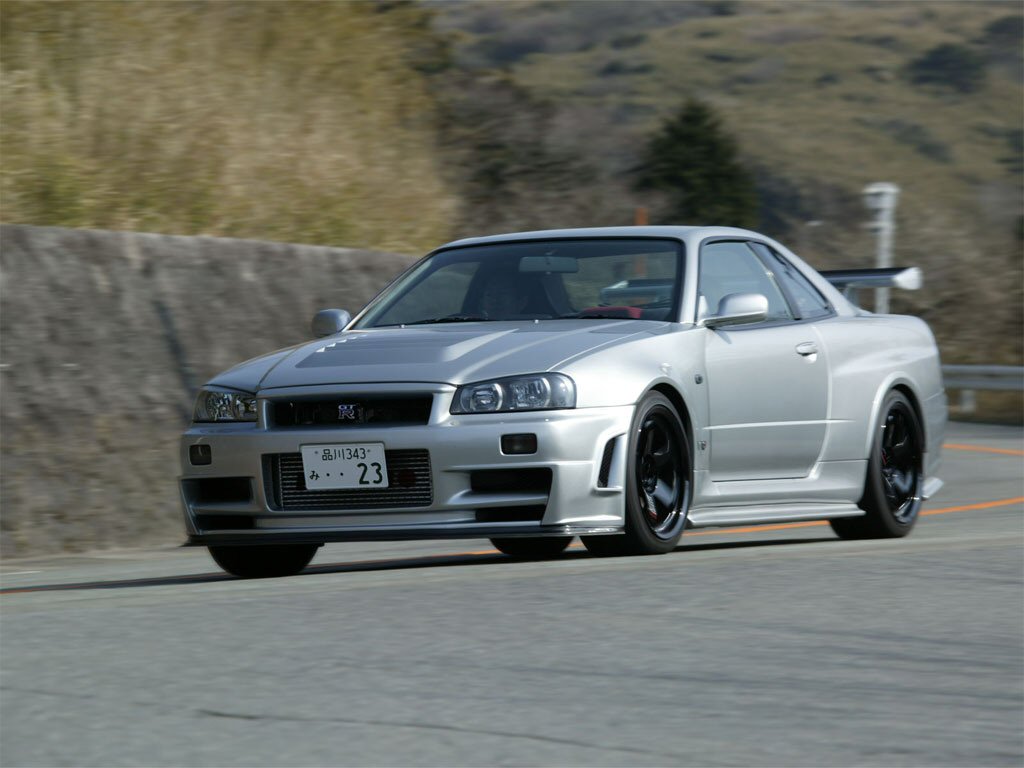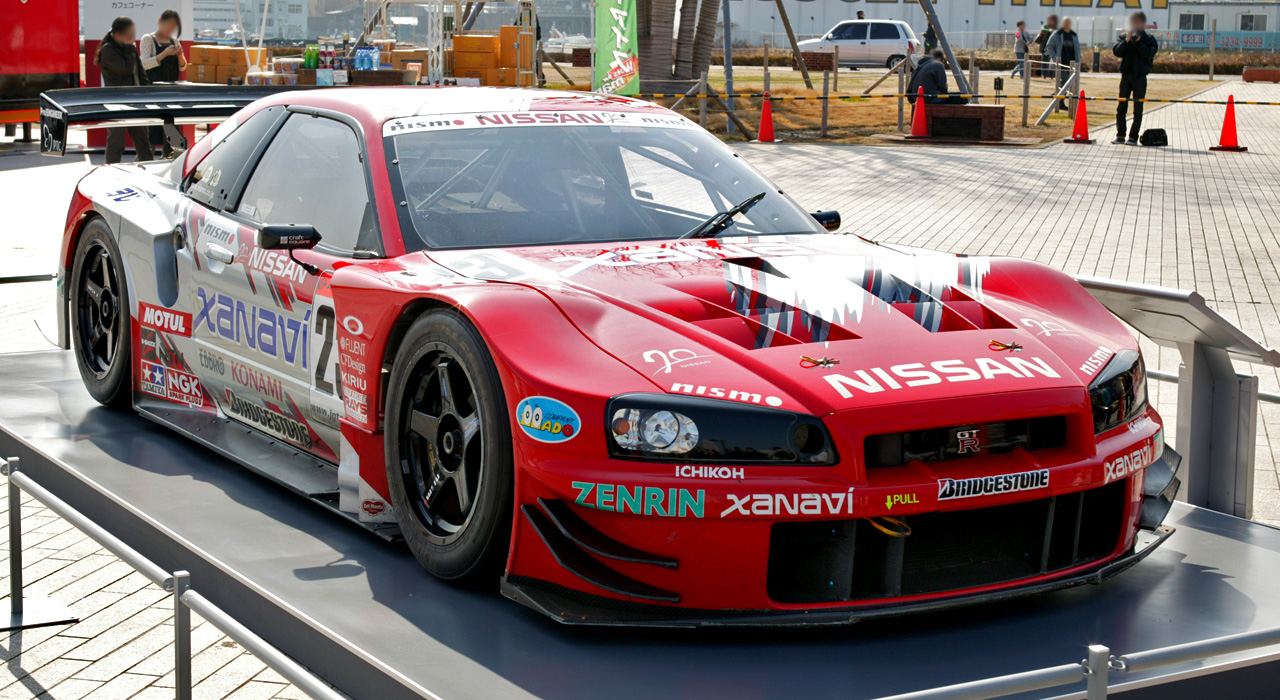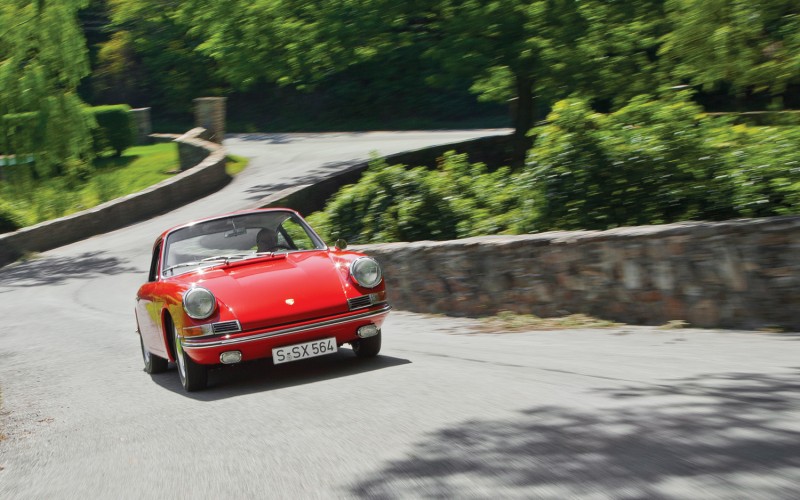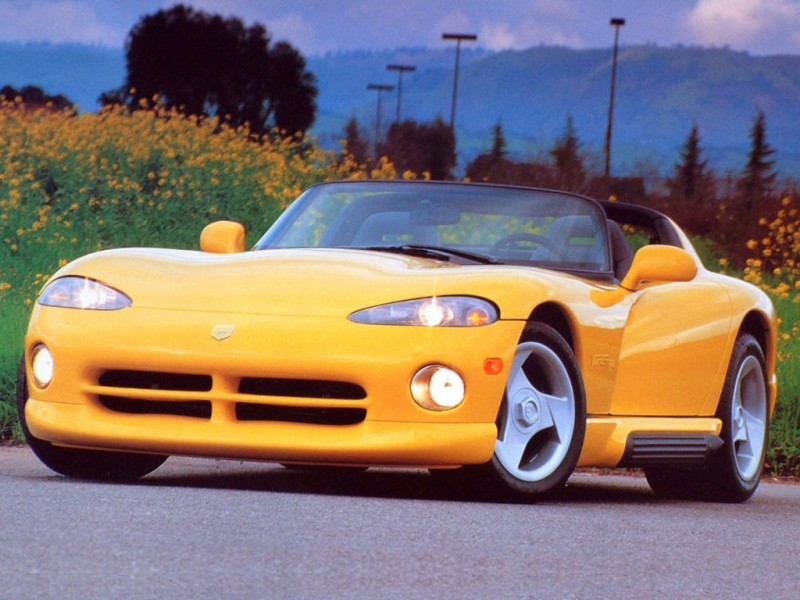The 2000s marked a new start for the world but for several Japanese sports cars it was the peak of their career. Unfortunately, it became the abrupt end of their era. Among them, Nissan’s Skyline GT-R stands out as being the best of its breed and truly deserving of the iconic status to which it is regularly upheld.
By the end of the millennium, Japanese automakers had triumphantly graduated from being simple, small car importers to sports car conquerors. Indeed manufacturers from the island nation had, especially in that last decade of the century, delivered to the world some of the finest evolutions of their models. It was the culmination of many years filled with trial, error, and experimentation for their burgeoning brands. Moreover, Japan’s carmakers had finally earned recognition as industry contenders capable of building, in many cases, far superior automobiles than the historically established performance brands.
For decades, Japanese producers struggled to be seen as worthy rivals to European and American rivals. Nevertheless, in the late 1990s, their profound technological and mechanical innovations meant that they could no longer be dismissed as second-class crafts. Unfortunately, as the millennium celebrations closed out the last century, so too would they unceremoniously usher in an abrupt end for their sports car stars; taking with them the prodigious Nissan Skyline GT-R.
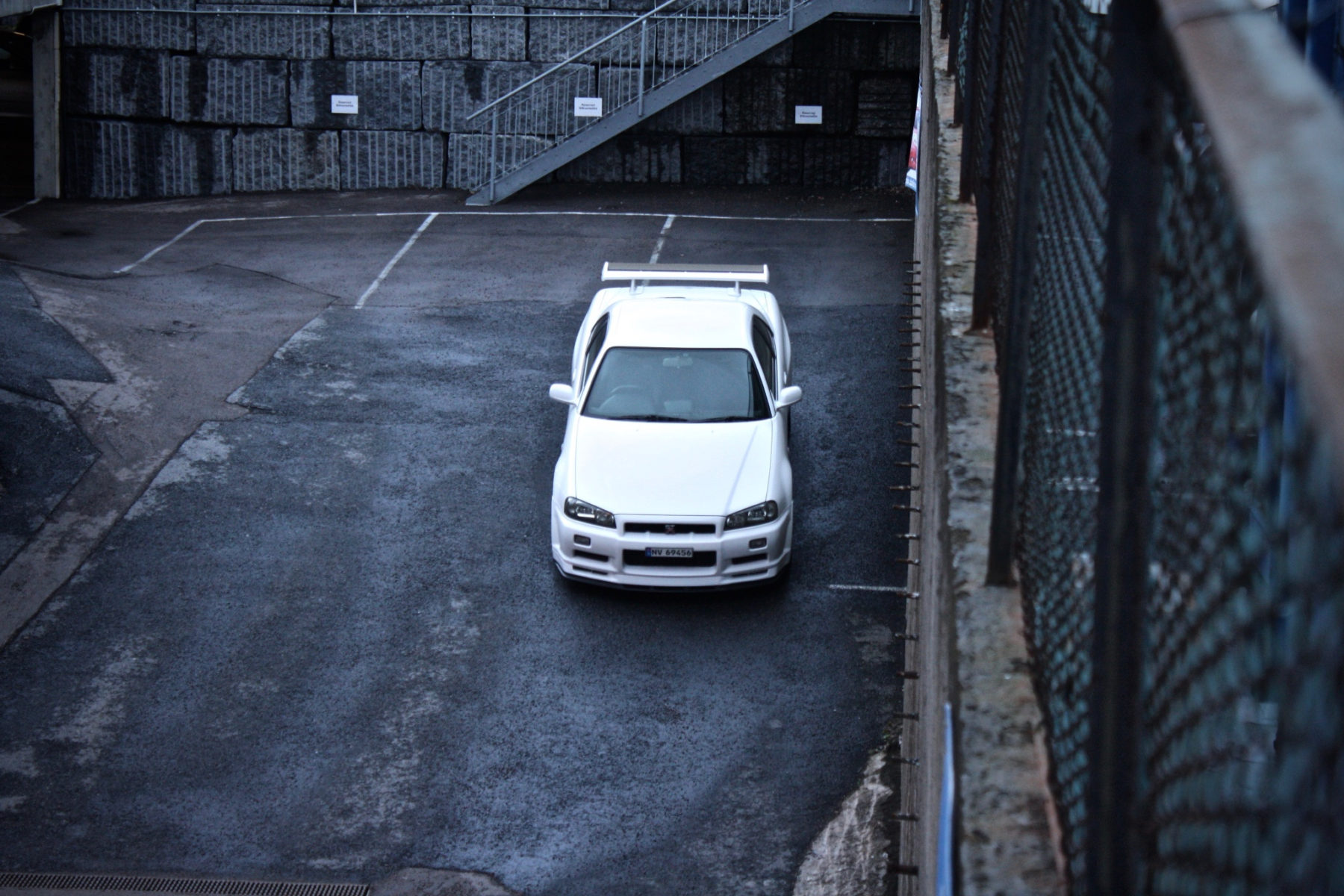
The Resolute Skyline GT-R
In 1969, Nissan unveiled the Skyline 2000 GTR. Back then, it was a performance-bred sedan with racing innovations directly baked into the package. Given the many racing successes of the GTR in the Japanese Touring Car series, Nissan had been steadily perfecting and improving the Skyline GT-R series. By 1989, the Skyline blossomed into the performance car we now associate with the moniker today, when Nissan introduced the Skyline GT-R (R32). Throughout the subsequent ten years, the car evolved through the engine, suspension, styling, and computer technology that drastically set it apart from its domestic and international contenders.
When the Skyline GT-R (R34) was exhibited in 1998, the world saw a familiar, yet evolved exterior. Underneath that sculpted bodywork, though lied the strength and athleticism of a champion. For the Skyline was, at last, upon its apogee.
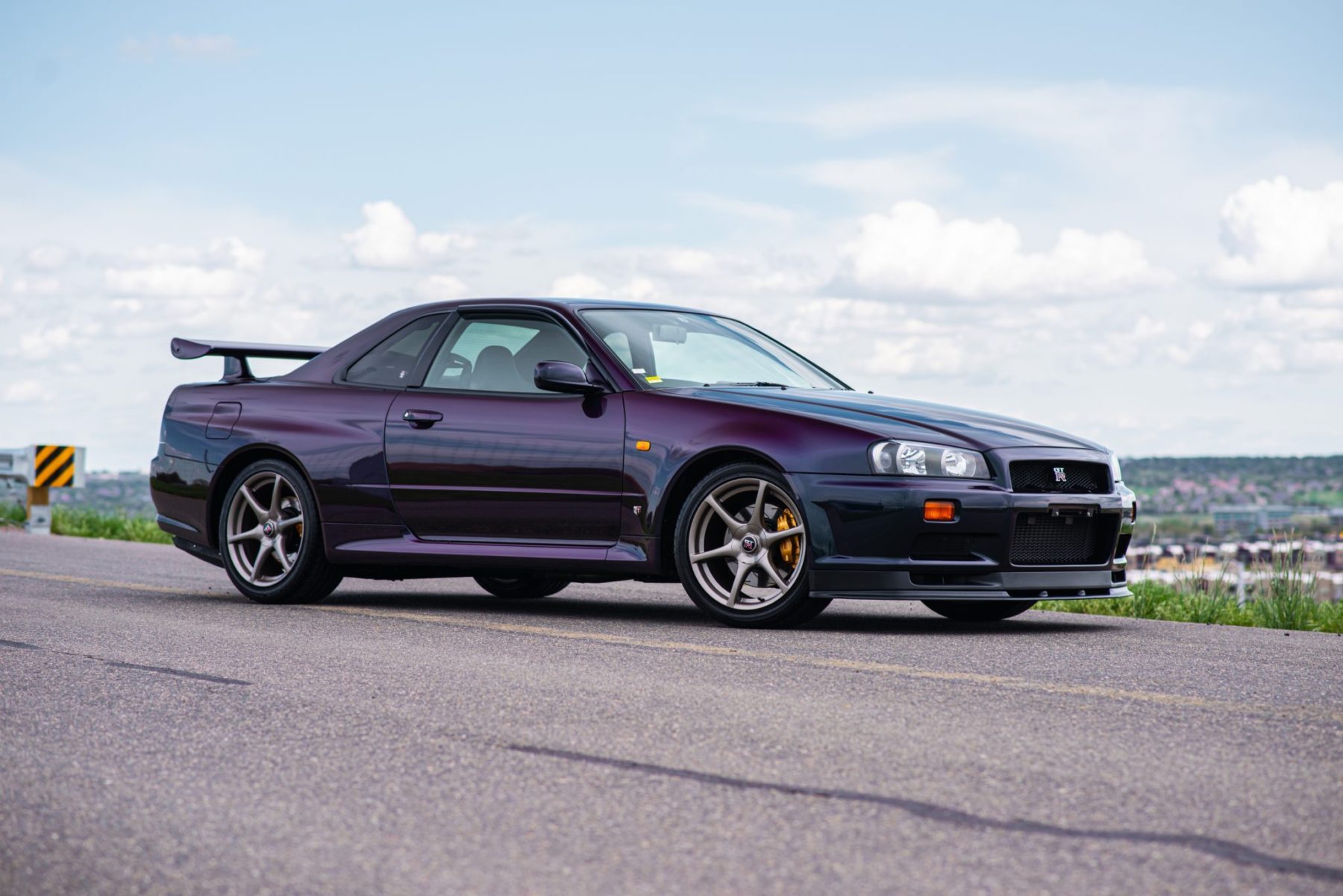
A Technological Titan
Technologically speaking, the R34 inherited many of the groundbreaking features its predecessors introduced. Yet now, with ten years of race track testing and knowledge, the newest Skyline was far more refined for raucous behavior. Although there was still no stability control, the complicated ATTESA E-TS all-wheel drive (AWD) system was still loaded with computer sensors to keep even the most ham-fisted pilots planted to the road. Furthermore, updates to the newest specifications and programming provided intelligent responses and reactions much faster than before. Coupled into the AWD system was a conventional mechanical differential that split power among the rear wheels.
In fact, these systems were designed so well together, that a stability control system was deemed unnecessary since the multi-plate clutches eliminated under or oversteer. The ATTESA E-TS AWD system was so determined to keep you safe that the Skyline could individually apply pressure to each brake caliper to better balance the car, a carryover from the racier versions of the R33. Further instilling driver confidence into the new Skyline was their upgraded Super HICAS rear-wheel steering system. By controlling the direction of the rear wheels during turning, the R34 was able to decrease the turning radius or enhance cornering stability.
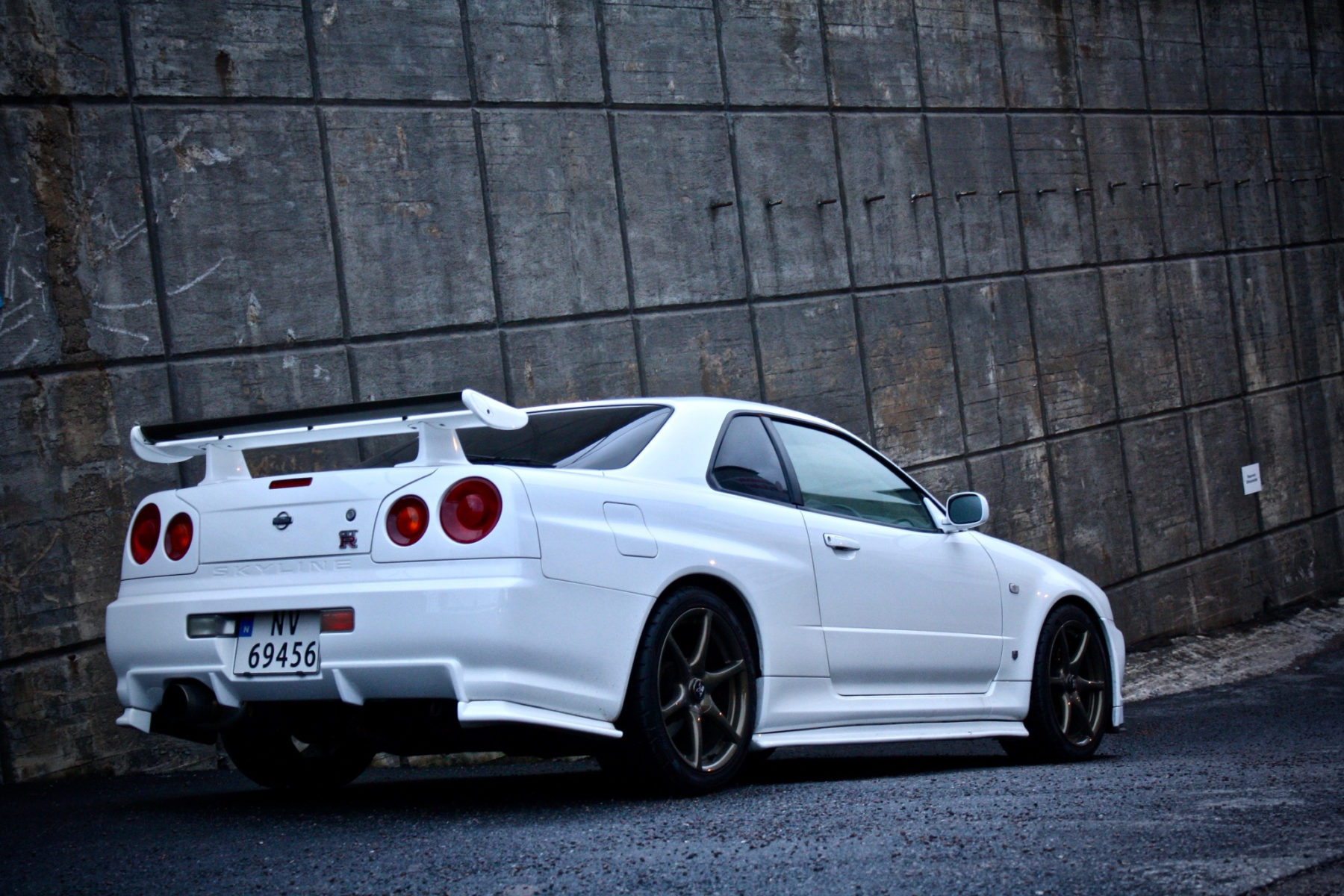
A lot of engineering wizardry went into the R34 suspension and for good reasons. When the R33 grew four inches over the R32, owners felt that the long bumper overhangs and corresponding weight increase diluted the driving experience. So, for the R34, Nissan shaved down three inches of wheelbase and pulled the bumpers back in, closer to the body. At the same time, the front lower suspension arms were cast in aluminum while camber and lateral stiffness were increased to hone responsiveness.
Carried over from the R33 was the hand-built RB26DETT straight-six twin-turbocharged motor, now adorned with a Cherry Red painted valve cover plate. These handbuilt 2.6-liter motors have six individual throttle bodies that allow them to act like individual engine cylinders for better performance and are famous for their engine block strength. Specifically, the R34 Skyline’s turbochargers saw improvements with ceramic fan blades that, because of their lithe figure, dramatically eliminated turbocharger lag.
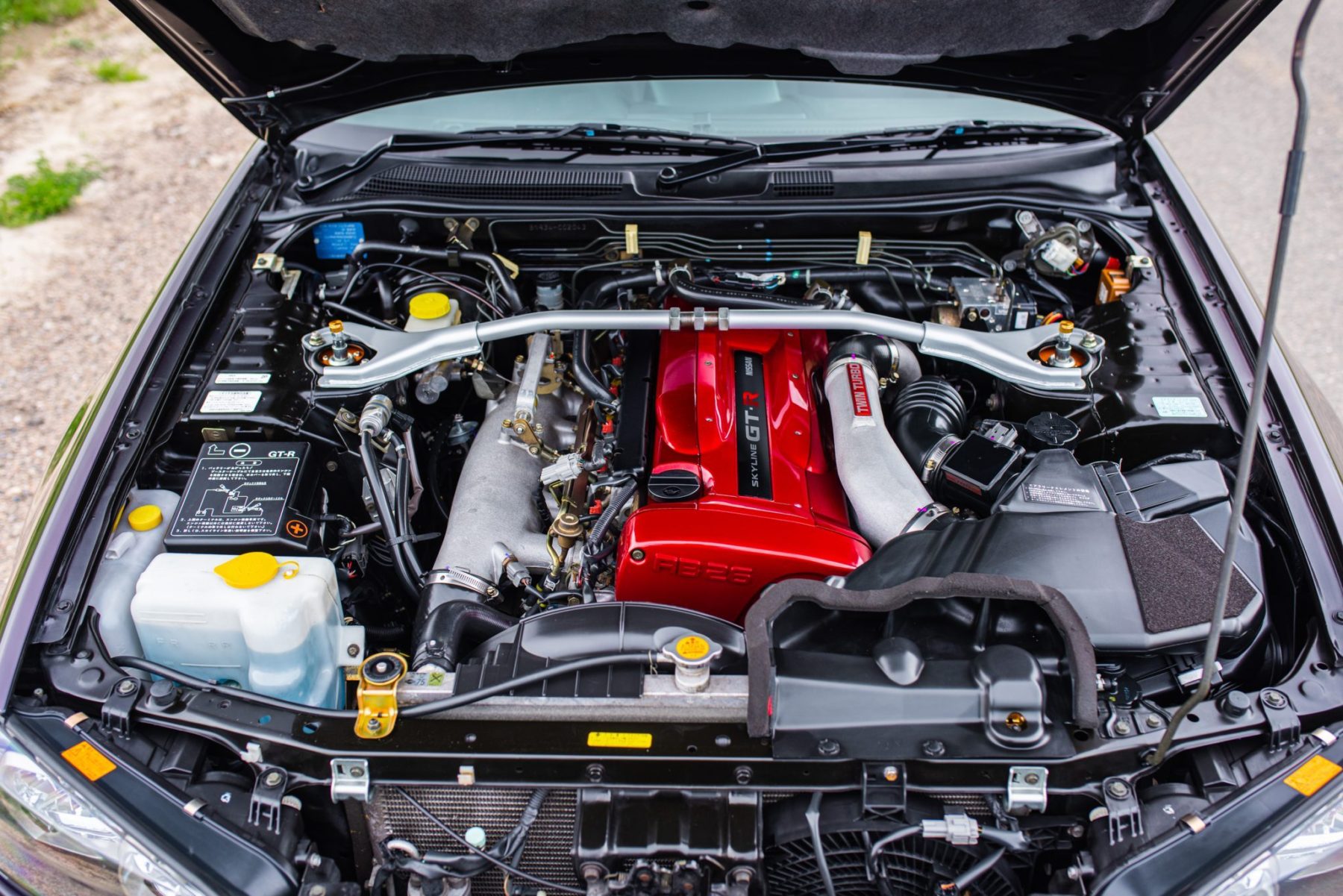
To adhere to the “Gentleman’s Accord” in Japan at the time, Nissan marketing publications never stated the actual horsepower figures for any of their R32 to R34 models. Instead, they listed the highest, agreed-upon figure that all Japanese manufacturers would use for their cars. So, out of the engine came the “same” 276 horsepower as the R33 but with a touch more torque (29 lb-ft) thanks to different camshaft profiles, valve timing, and a freer-flowing exhaust. All of this energy was sent to the wheels via a new, stronger six-speed Getrag transmission – classic.
Interior & Exterior Enhancements
Never meant to be as precise as a lightweight scalpel, the R34 Skyline, like its predecessors, traded fine-edge finesse for driver security. However, Nissan did put in earnest effort to limit weight and intensify aerodynamics with the new generation. While the chassis is stiffer and heavier (22-45lbs, 10-20kg), they curbed that accumulation smartly.
Taken from the wheels were a savings of 17 lbs (7.7 kg) total. Another 2.2 lbs (1 kg) was saved by converting the front wings and hood to aluminum. Plus, now a carbon fiber spoiler adorned the rear of the GT-R, and even the audio system speakers were put on a diet. Most importantly, though, was the front undertray with a bumper attached splitter. These aerodynamic additions aided stability by creating a low-pressure zone that pulled hot, high-pressure air from the wheel wells and engine bay. The aero trickery worked brilliantly, dramatically reducing front-end lift and brake temperatures.
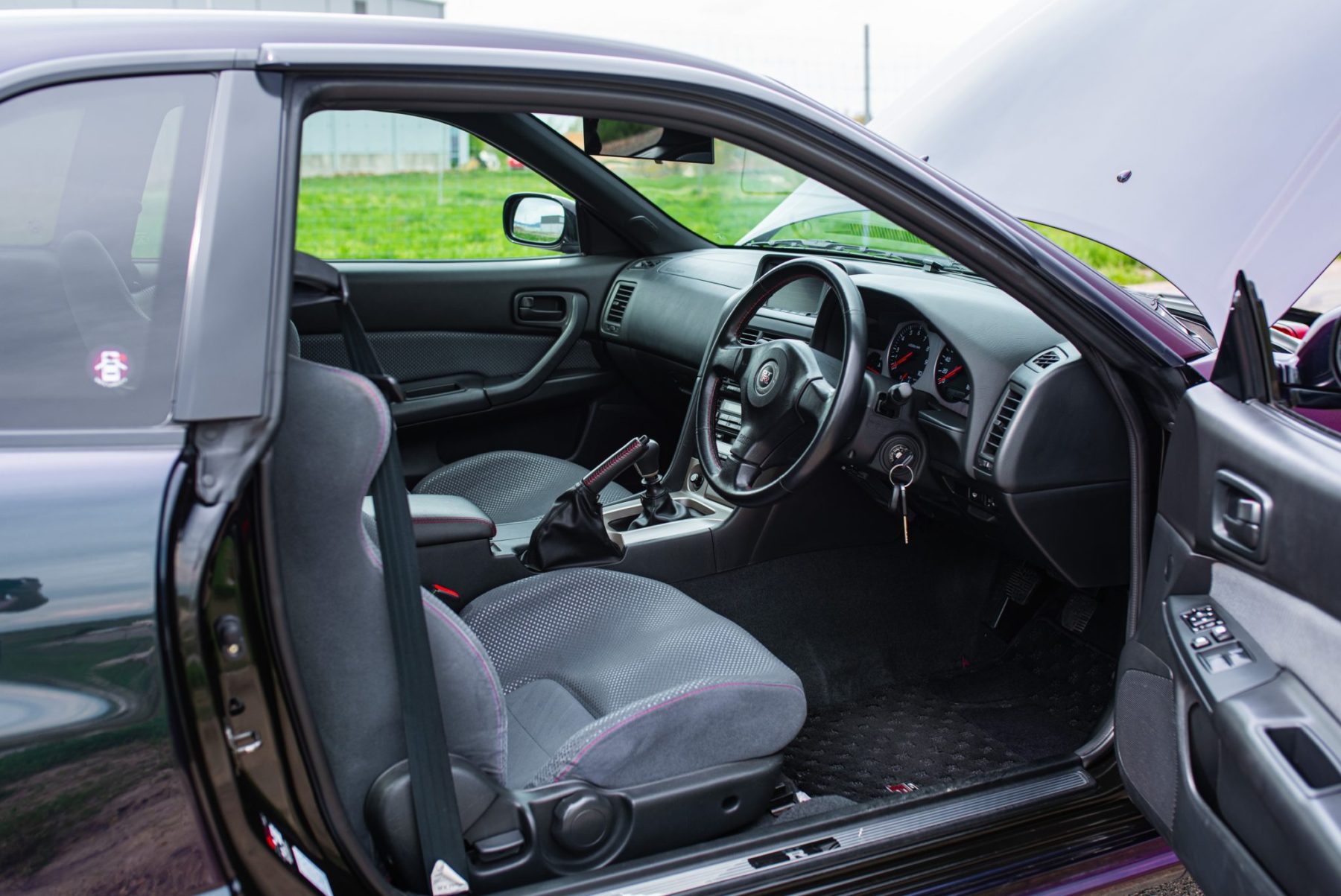
Inside the Skyline carried on a tradition of driver awareness through a bigger, 5.8” Alpine LCD screen. Drivers could program the screen to display seven different readings, such as oil temperature, water temperature, turbocharger boost, and more. A new door panel design modernized the entrance aesthetic. As did a sporty three-spoke steering wheel christened with a colorized GT-R badge sitting in front of a brushed aluminum gauge face cluster. Furthermore, drivers sat in updated, more heavily bolstered sports seats that properly looked the performance-car part.
Various Versions: The V-Spec
Although the R34 Skyline lasted less than five years, it had several distinctive variations (14 in total) that all bore various improvements or revisions. The first was the V-Spec (Victory Specification) aimed to drastically increase track performance. They accomplished this through advancements including an ATTESA E-TS Pro system (more radical programming), active rear limited-slip differential (LSD), stiffer suspension, new carbon fiber front splitter, and rear diffuser. The multi-function display also gained up to five more data points (intake temp, exhaust temp, lap timer, boost pressure, G-force meter).
In 2000, Nissan updated the V-Spec to the V-Spec II. An even stiffer suspension arrangement was seated below the bodywork, and a new carbon fiber hood with a NACA duct replaced the aluminum units. Larger rear brake rotors and revised interior colors (black cloth) and aluminum pedals were welcome modifications.
Tied into the V-Spec was the M-Spec (named after Cheif Engineer Mizuno). This package had a leather interior, heated seats, new dampers, more rigid anti-sway bars, and a reworked suspension arrangement specific to the M-Spec’s weight. It was the luxury version of the GT-R, so the carbon fiber hood was substituted for the standard aluminum fixture.
The ‘Ringer
Always intended to be raced, the Skyline GT-R needed to be homologated through the sale of cars to the public- the N1 was this version. Installed with the newest racing tunes for electronic systems and a specialized racing motor, these homologated versions came without air conditioning, radios, audio systems, and other superfluous accessories to help limit weight. Less than forty of these stripped-down cars were built and only colored in white. Nearly all were sold to racing teams or used by NISMO racing.
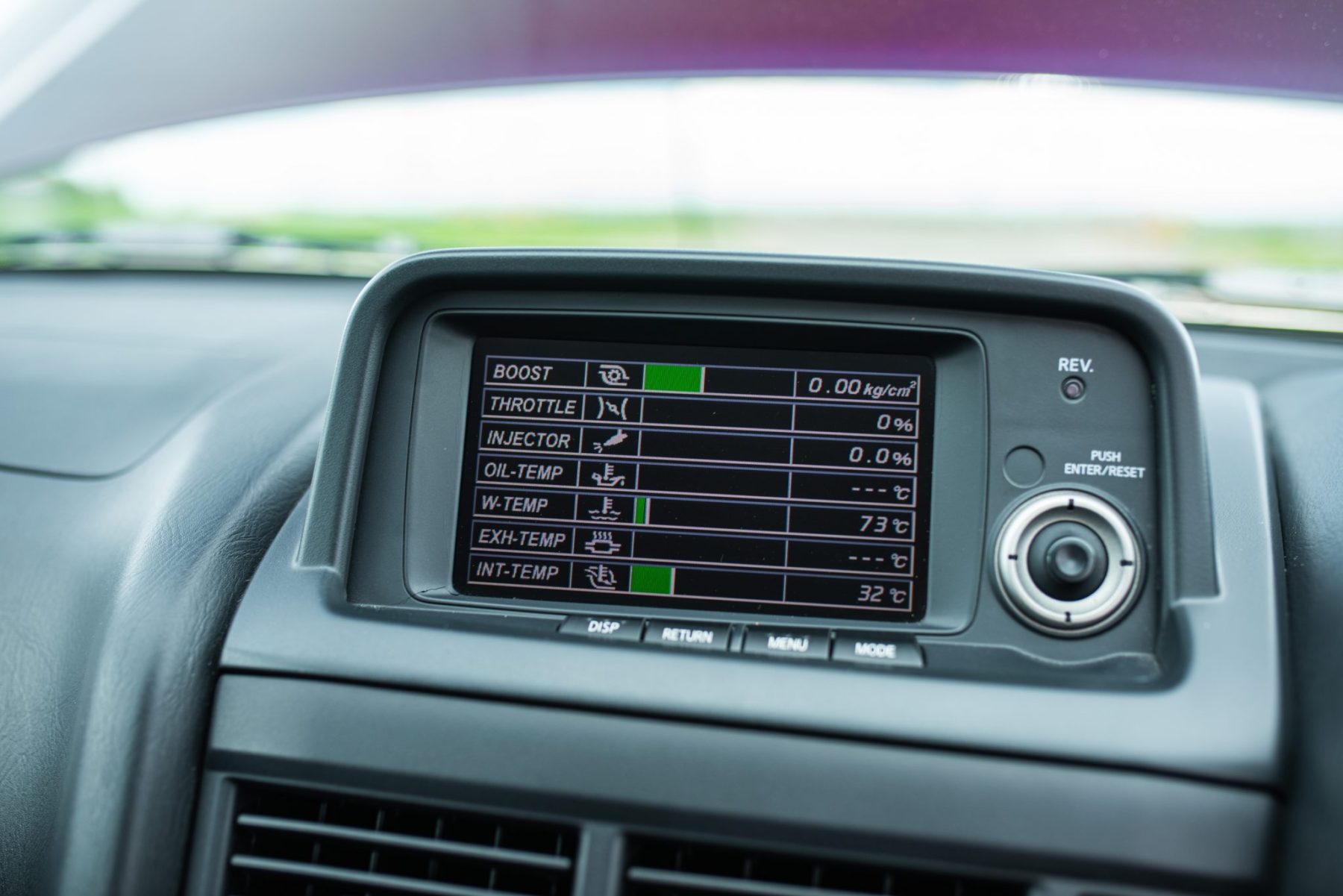
Designed for durability the cars were outfitted with heavy-duty oil and water cooling systems. To prevent cracking under race conditions the motor’s cylinder walls were thicker. The lightweight ceramic turbocharger fans were replaced by stronger steel units. Plus, piston rings, crankshafts, and connecting rods were all scrapped for improved designs.
1,000 of these N1 engines, revised for street use, made it into production models for 2002, via the Nürburgring editions of V-Spec II Nür and M-Spec Nür cars. The only alteration being that these N1 motors were adorned with a gold-painted VIN plate and cam-covers instead of Cherry Red. Inside, the speedometer read higher and there was a new color of accent stitching on seats and panels.
The Z-Tune
By 2003, the R34 Skyline had already been declared dead. Nevertheless, as a last hurrah, Nissan repurchased 20 V-Spec II cars and then went crazy with them. They installed the Z1 motor, which was a 2.8-liter RB26DETT concept engine modeled for use in their Le Mans GT2 and GT500 racing programs.
The engine, thanks to improved displacement and revisited turbochargers pushed out 500 horsepower! This power increase was enough to take the Skyline to 60 mph (100 km/h) in 3.8 seconds and to a top speed of 203 mph (326 kph). Entirely built by hand the cars were rigged with vast swaths of carbon fiber, were seam-welded in specific areas, were adorned with aggressive venting and bodywork, and rode on an authentic race car-derived suspension setup. Although 20 were repurchased only 19 ultimately received the special Z-tune Silver paint that makes these cars among the most expensive street-legal Skyline GT-R ever sold.
Track Limitations
Despite its short lifespan the R34 Skyline did manage to see some racing success in the Japanese Grand Touring Championship (JGTC). Founded in 1993, the series aimed to reduce the black-hole budgeting that would plague racing in the late 1990s. Impositions of weight, power, and other aspects of racing were strictly enforced to ensure competitive balance.
In 1999, the R34 entered service and would score points in all six rounds of the JGTC series with the Pennzoil-sponsored #1 car going on to win the driver’s trophy two years in a row. 2002 was a sad year because Nissan decided to put the RB26DETT out to pasture. Although it lost its heritage with the change, replacing it with a V6 (VQ30DETT) motor significantly improved handling and the turning speed of the GT-R.
2003 was the last year a Skyline GT-R would race in the JGTC series. Nissan replaced the front and rear structures of their GT500 racer with a new tubular space frame. The results were impressive. The car was wider, lower, and speed capability dramatically increased. Despite not winning a single race overall, their dependability and consistent pace helped them score enough points to win the championship. This racing success was the solidifying measure of their mission to build a race car that merged mechanical and electronic technology together.
The End of an Era
When production of the R34 Skyline ceased in 2002, the GT-R had ascended into its ultimate form. While most cars eventually meet their fate at the hands of technological decay, the Skyline was still at the bleeding edge. In truth, the RB26 alone was not even close to being at its performance capacity. All of this makes the end of the Skyline lineage more tragic since there was no replacement scheduled.
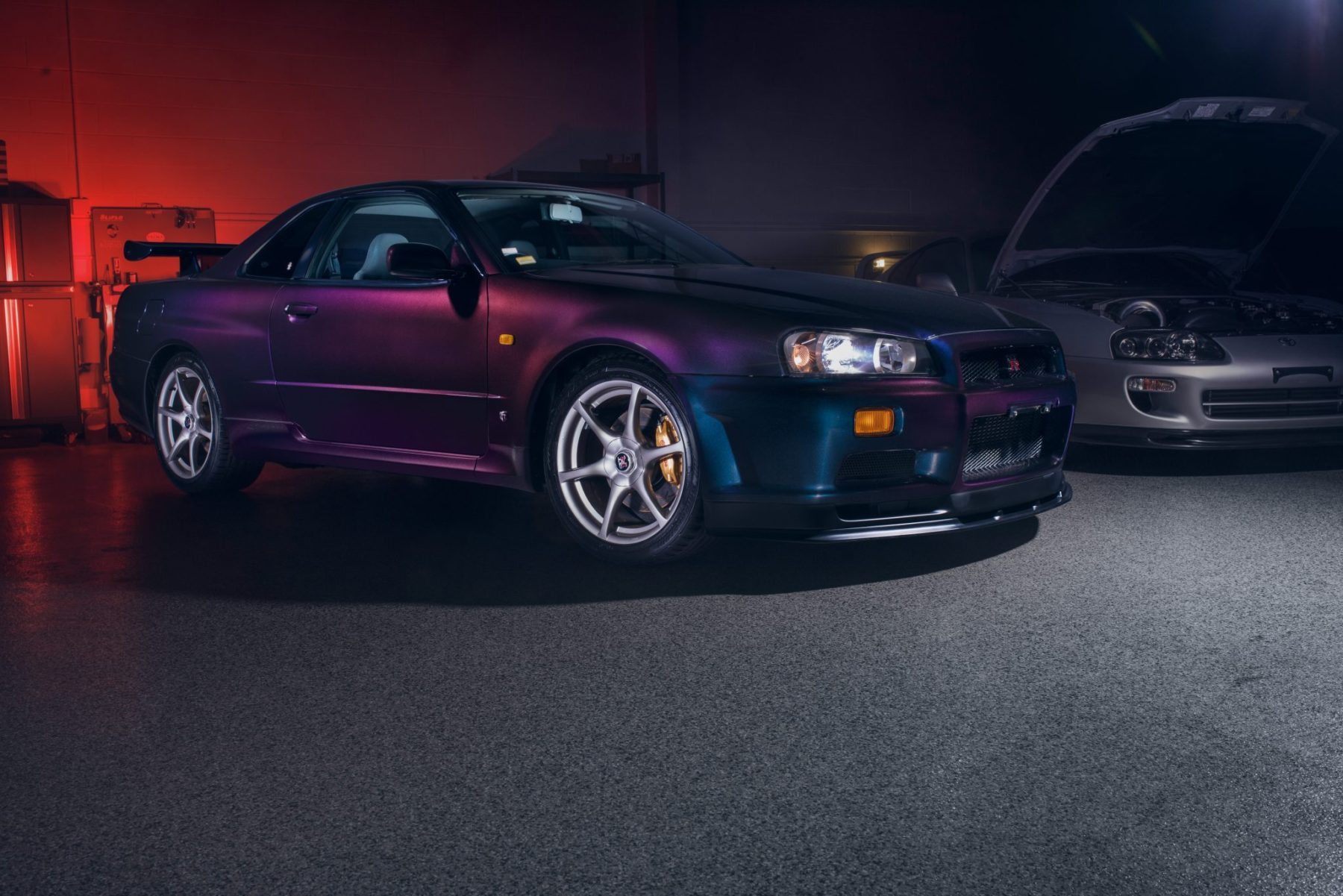
Yes, with the onset of the new millennium automakers turned their attention to a new market segment – SUVs. The halcyon of Japanese performance cars, the decades of tireless work to garner respect and establish themselves as capable performers slipped away for the sale of the modern stagecoach. Nissan’s Skyline wasn’t alone in its ascent to heaven either: Mazda’s RX-7, Toyota’s Supra, and two years later Honda’s NSX would all become extinct by 2005.
Thankfully, our memories of these titans cannot be erased – especially the R34 Skyline. With its tragically short life, we only find ourselves fonder of it. The original era of Japanese sports cars may have ended in the early 2000s, but the message of what these cars were capable of was certainly not forgotten there.
Specifications
- Years – 1998-2002
- Layout – Front-engine
- Drive – All-Wheel Drive
- Body Style – Coupe
- Seating – 2+2
- Motor – Turbocharged Inline 6
- Displacement – 2.6 liters
- Power (horsepower) – 276 @ 6800rpm
- Torque – 289 lb-ft (397 Nm) @ 4400rpm
- Transmission – 6-speed manual
- Wheelbase – 104.9 in (2665 mm)
- Weight – 3386 lbs (1536 kg)
- 0-60 mph (100 km/h) – 5.0 seconds
- Top Speed – 294 km/h (155 mph)

